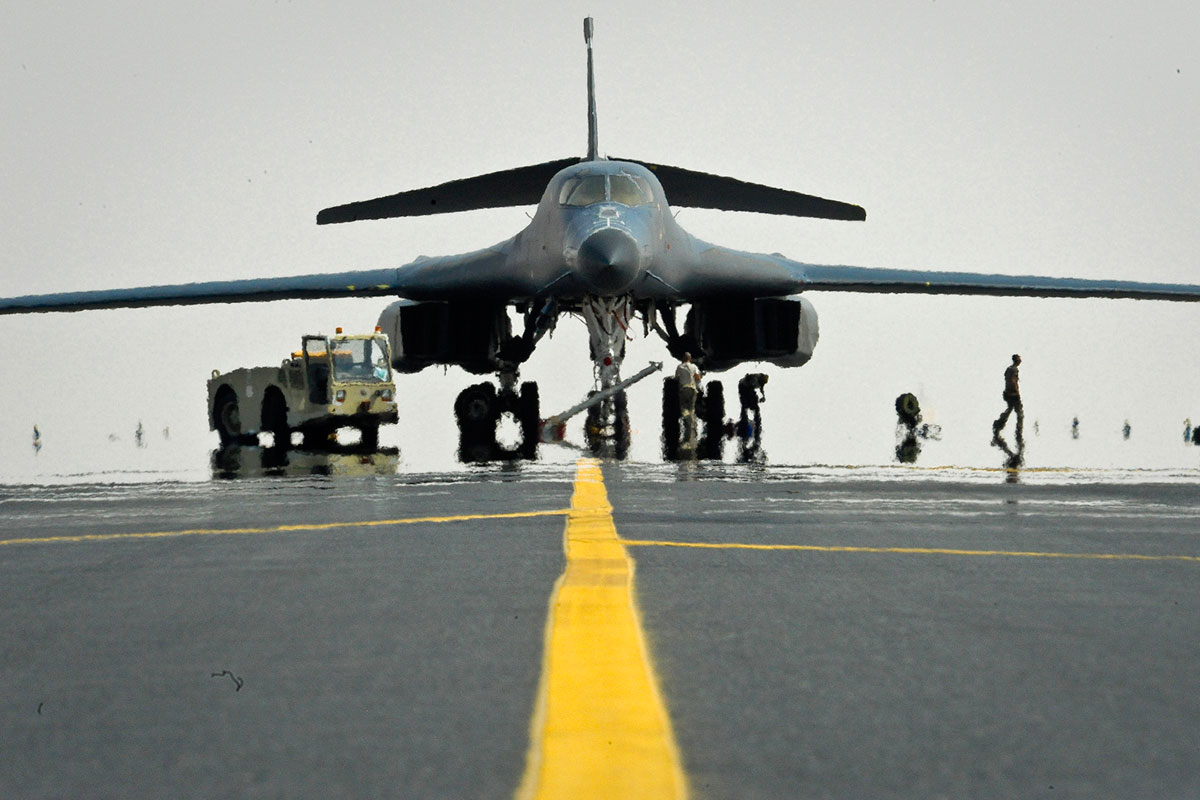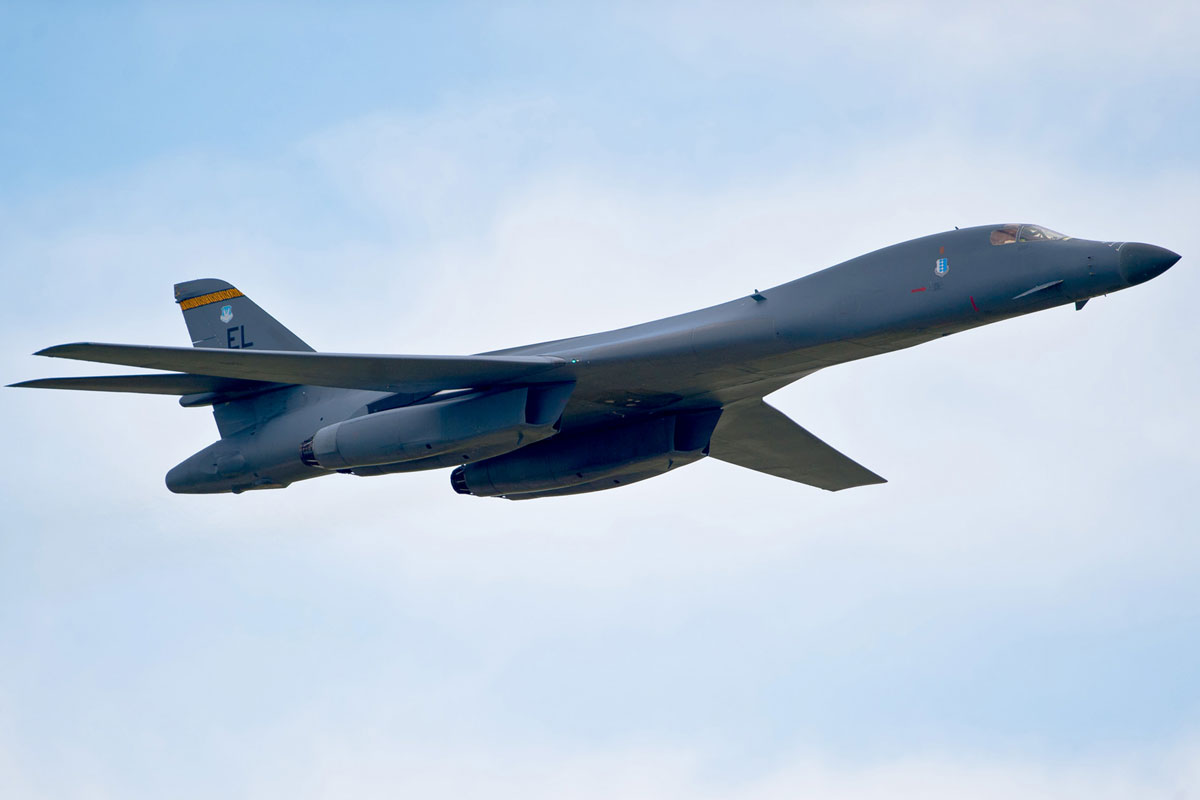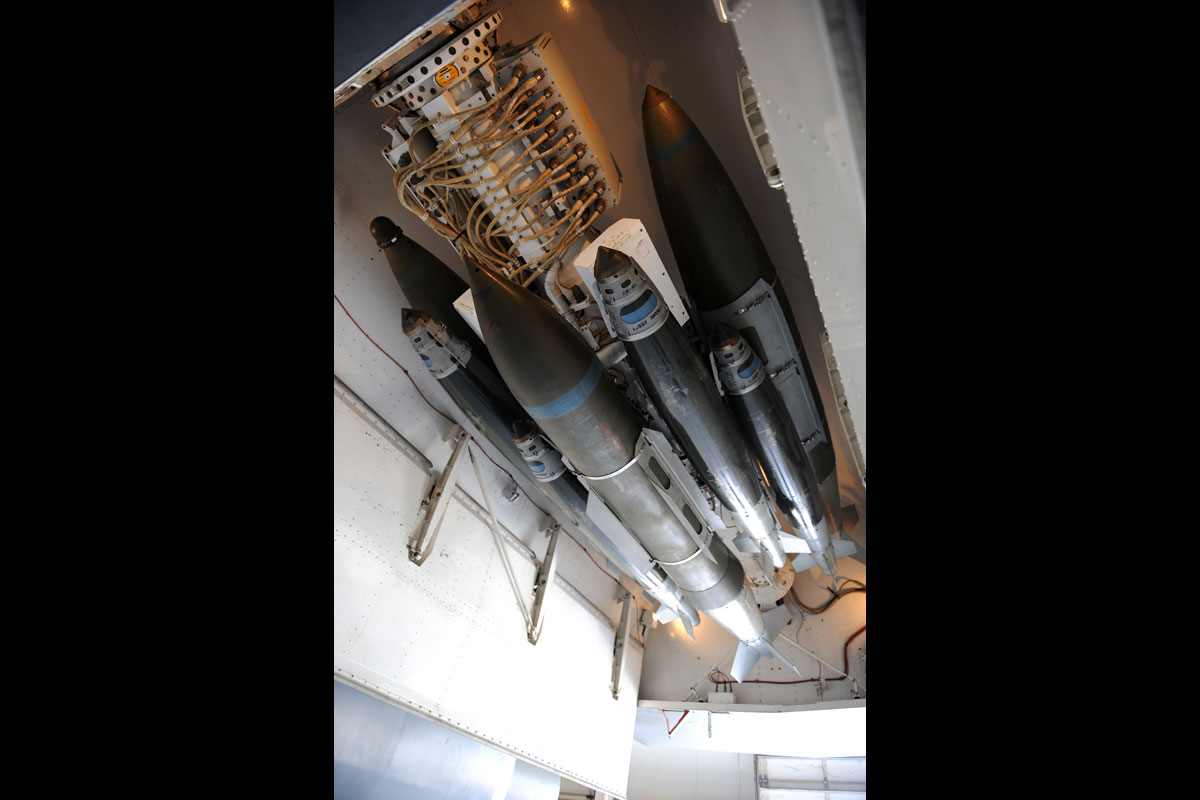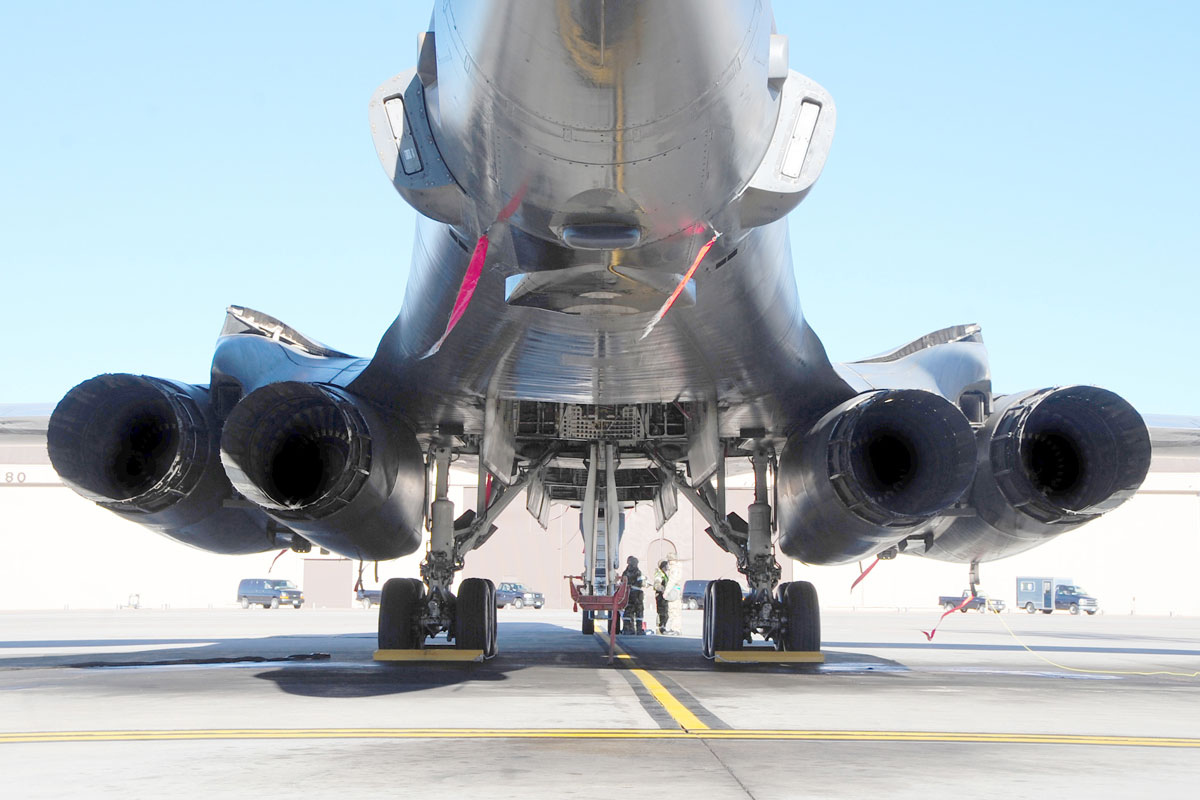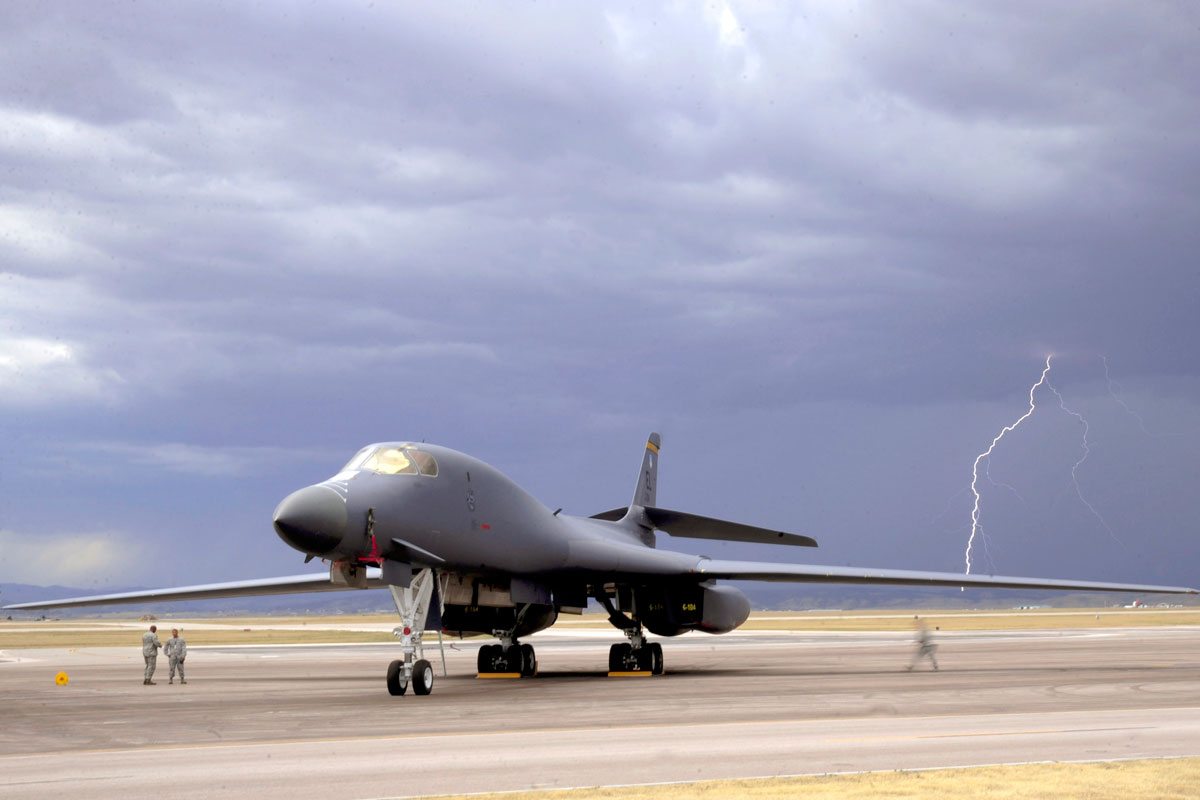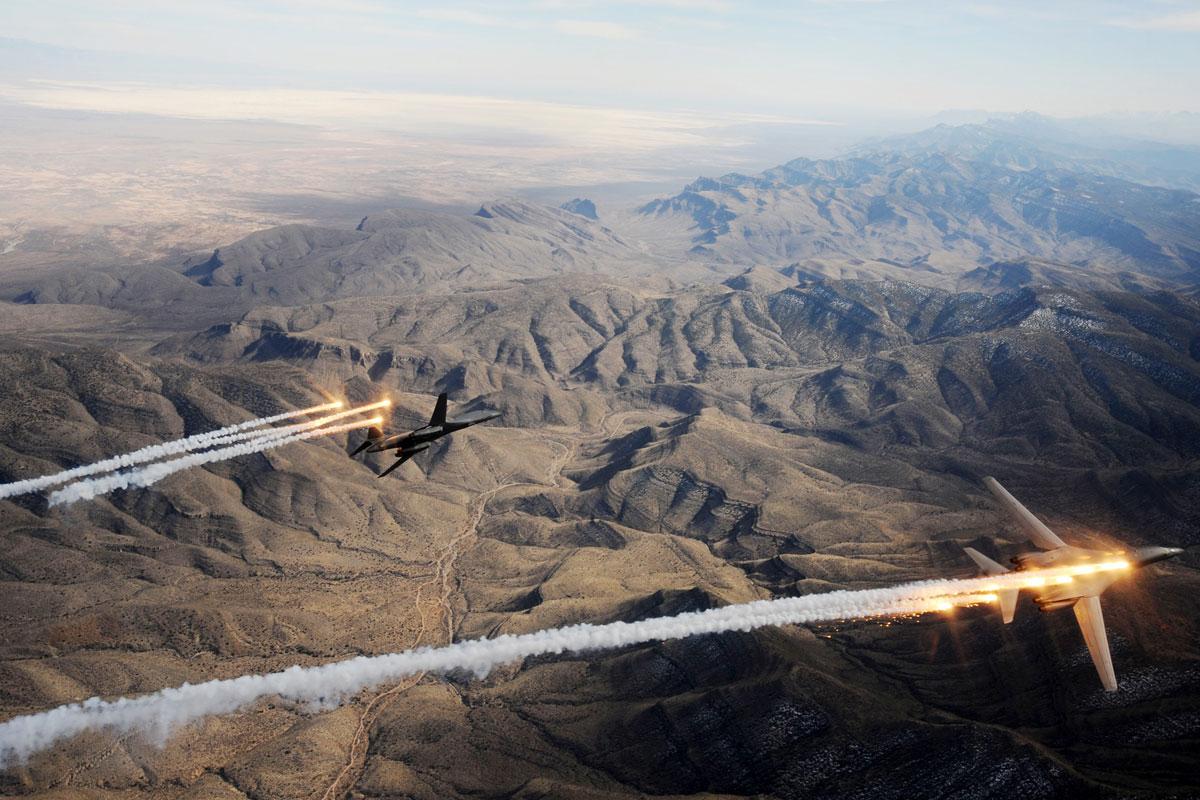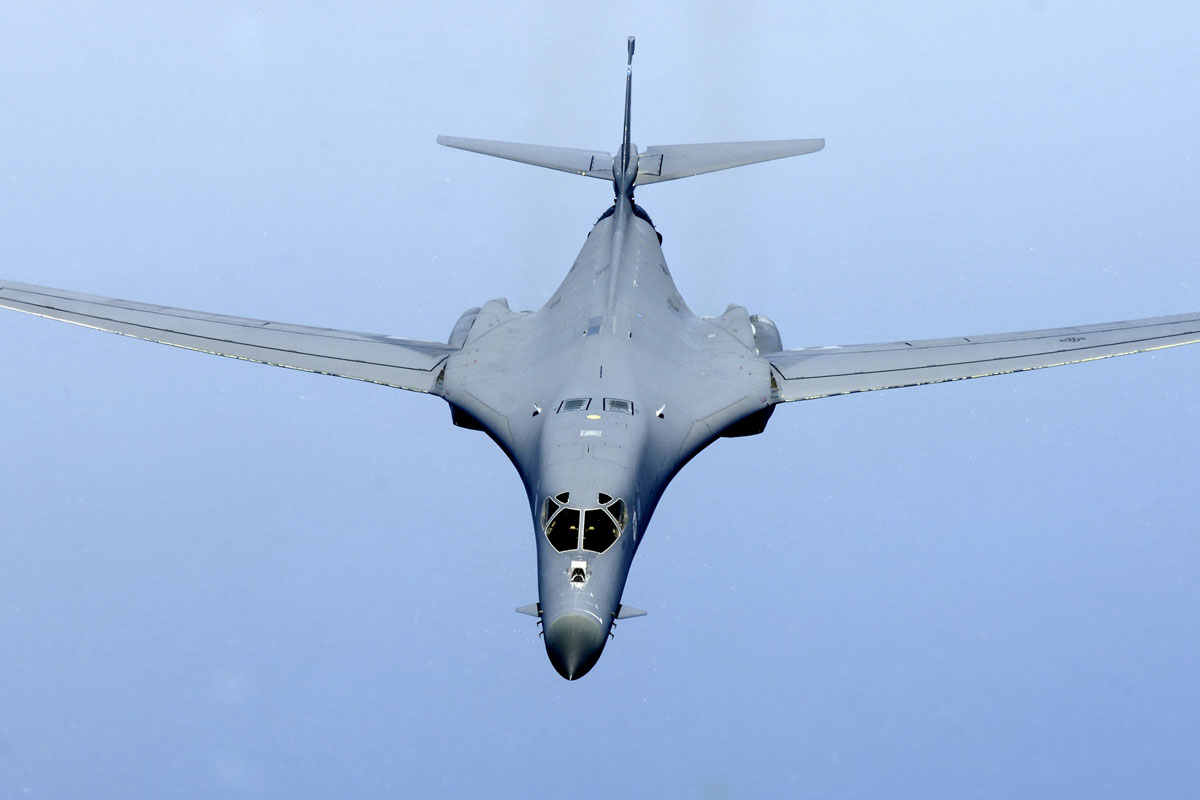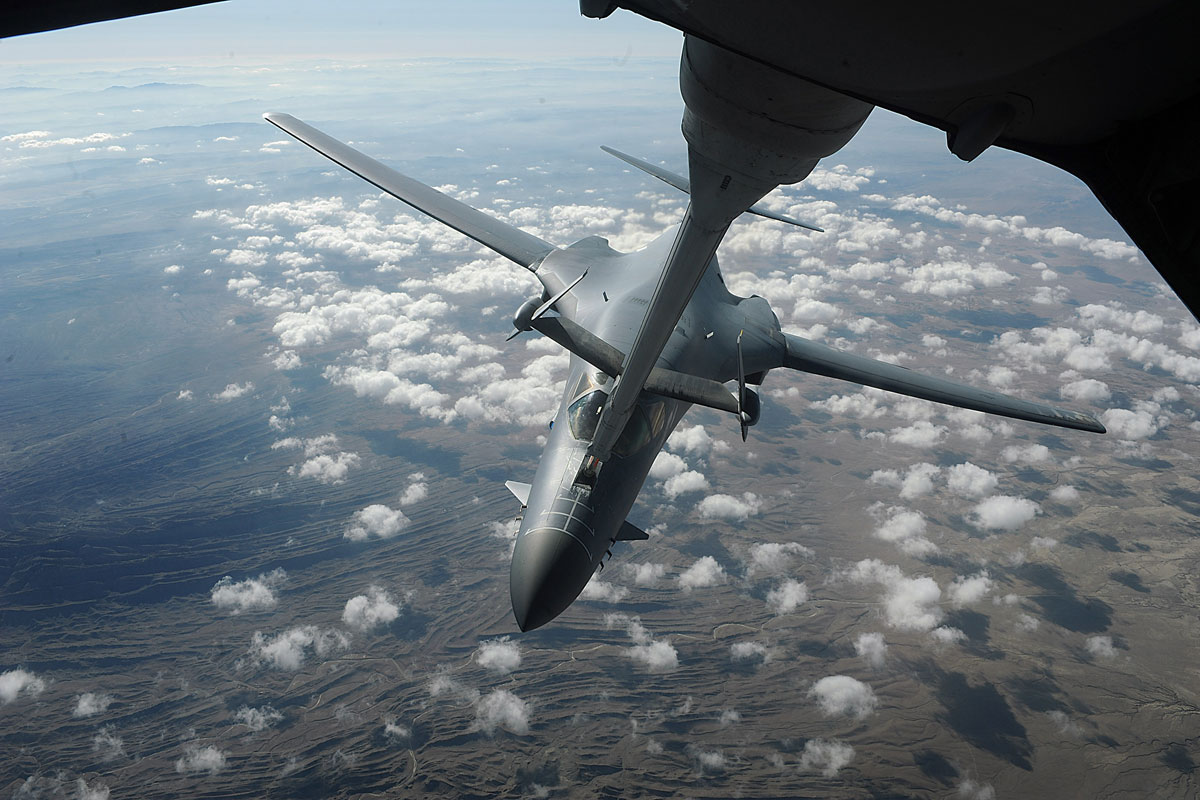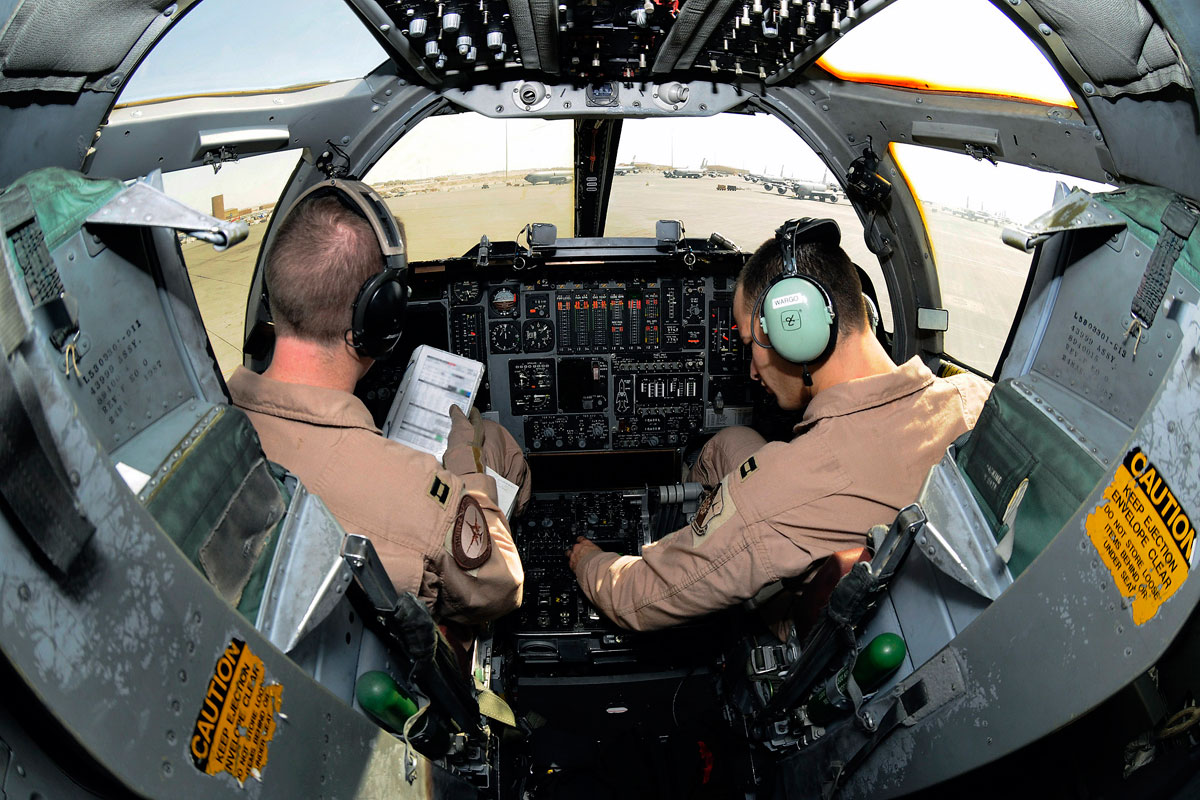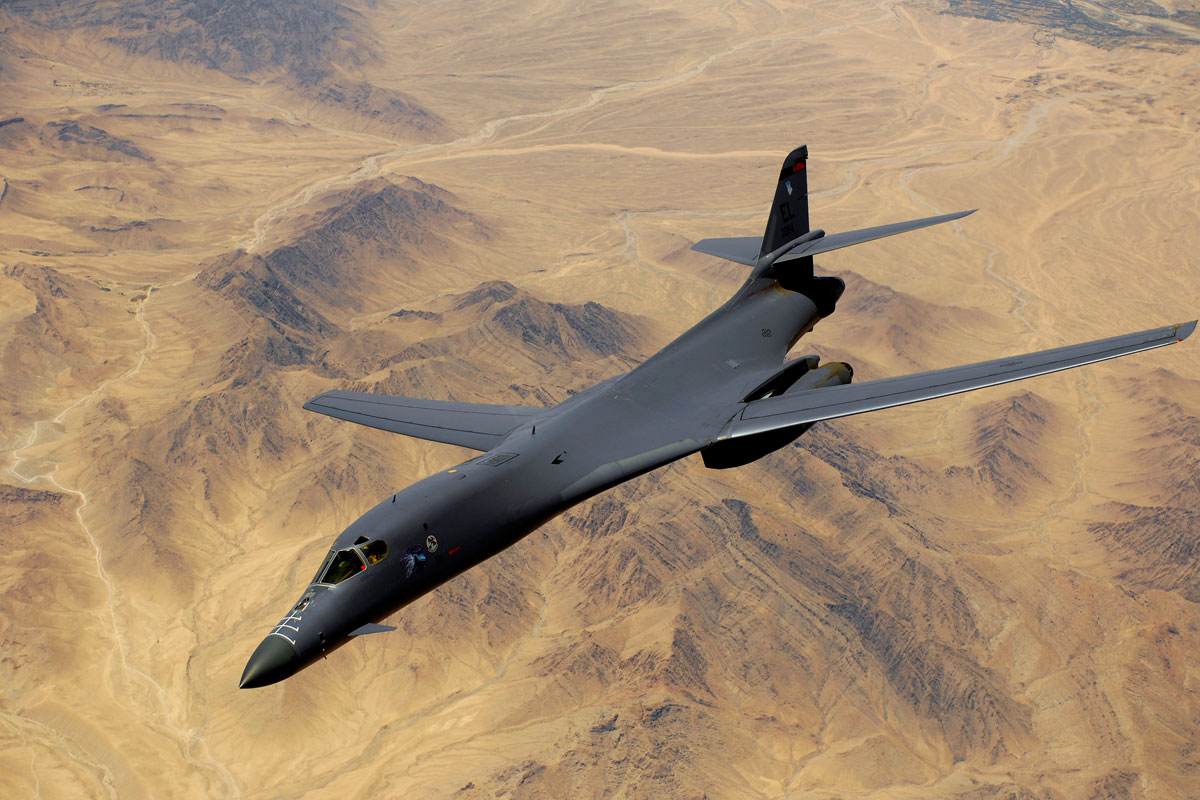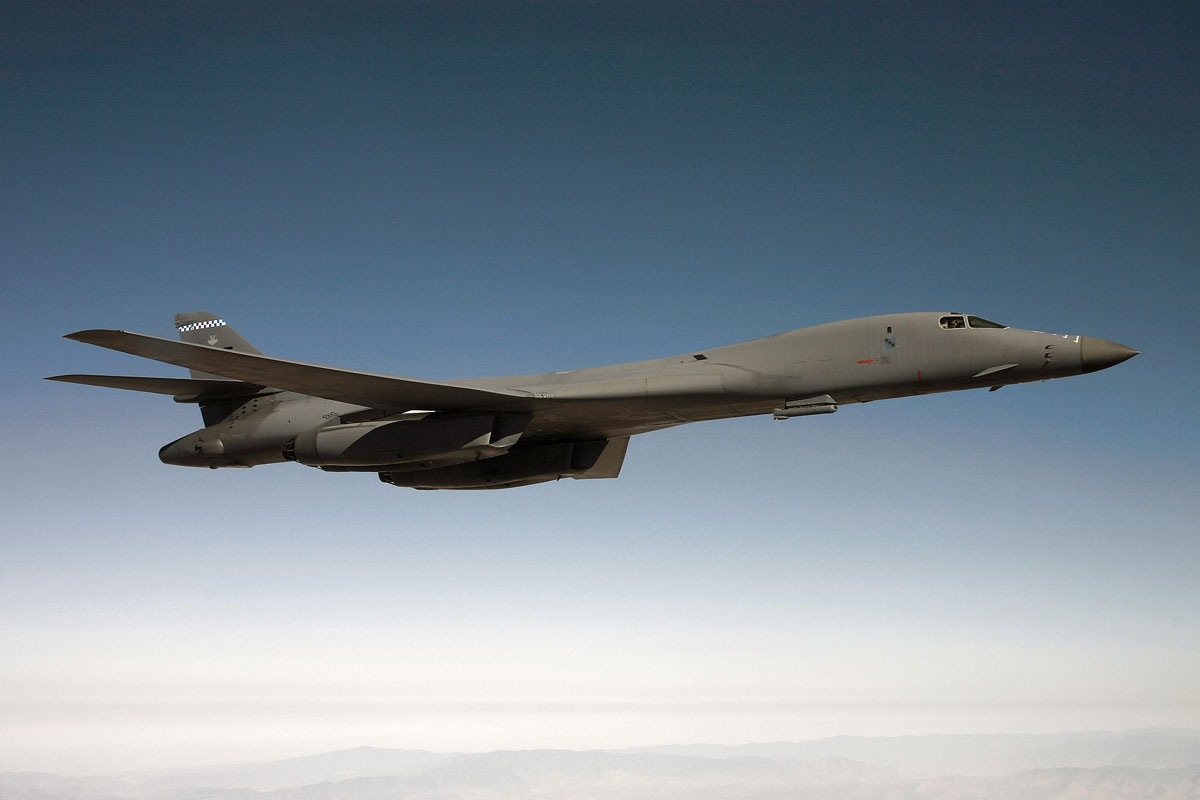Manufacturer: Boeing
Service: USAF
Armament: 84 500-pound Mk-82 or 24 2,000-pound Mk-84 general purpose bombs; up to 84 500-pound Mk-62 or 8 2,000-pound Mk-65 Quick Strike naval mines; 30 cluster munitions (CBU-87, -89, -97) or 30 Wind-Corrected Munitions Dispensers (CBU-103, -104, -105); up to 24 2,000-pound GBU-31 or 15 500-pound GBU-38 Joint Direct Attack Munitions; up to 24 AGM-158A Joint Air-to-Surface Standoff Missiles; GBU-54 Laser Joint Direct Attack Munition
Power plant: 4x General Electric F101-GE-102 turbofan engine with afterburner
Speed: 900 mph (Mach 1.2 at sea level)
Range: Intercontinental
Crew: Four (aircraft commander, copilot, and two weapon systems officers)
An icon of the latter decades of the Cold War, the B-1B Lancer was originally designed as a strategic nuclear bomber with a mission to fly at low altitude in order to avoid Soviet early warning radars. With the end of the Cold War, the B-1B Lancer has been adapted to carry conventional munitions and has been used extensively in close air support and tactical bombing missions.
Carrying the largest payload of both guided and unguided weapons in the Air Force inventory, the multi-mission B-1 is the backbone of America's long-range bomber force. It can rapidly deliver massive quantities of precision and non-precision weapons anywhere in the world.
Related Video:
Bullet Points: B-1B Lancer
The B-1B's blended wing/body configuration, variable-geometry wings and turbofan afterburning engines, combine to provide long range, maneuverability and high speed while enhancing survivability. Forward wing settings are used for takeoff, landings, air refueling and in some high-altitude weapons employment scenarios. Aft wing sweep settings - the main combat configuration -- are typically used during high subsonic and supersonic flight, enhancing the B-1B's maneuverability in the low- and high-altitude regimes. The B-1B's speed and handling characteristics allow it to seamlessly integrate in mixed force packages. These capabilities, when combined with its substantial payload, excellent radar targeting system, long loiter time and survivability, make the B-1B a key element of any joint/composite strike force.
The B-1 is a highly versatile, multi-mission weapon system. The B-1B's synthetic aperture radar is capable of tracking, targeting and engaging moving vehicles as well as self-targeting and terrain-following modes. In addition, an extremely accurate Global Positioning System-aided Inertial Navigation System enables aircrews to navigate without the aid of ground-based navigation aids as well as engage targets with a high level of precision. The Combat Track II radios provide a secure beyond line of sight reach back connectivity until Link-16 is integrated on the aircraft. In a time sensitive targeting environment, the aircrew can use targeting data from the Combined Air Operations Center over Combat Track II, then to strike emerging targets rapidly and efficiently. This capability was effectively demonstrated during operations Enduring Freedom and Iraqi Freedom.
The B-1B's onboard self-protection electronic jamming equipment, radar warning receiver (ALQ-161) and expendable countermeasures (chaff and flare) system and a towed decoy system (ALE-50) complements its low-radar cross-section to form an integrated, robust defense system that supports penetration of hostile airspace. The ALQ-161 electronic countermeasures system detects and identifies the full spectrum of adversary threat emitters then applies the appropriate jamming technique either automatically or through operator inputs.
Current modifications build on this foundation. Radar sustainability and capability upgrades will provide a more reliable system and may be upgraded in the future to include an ultra high-resolution capability and automatic target recognition. The addition of a fully integrated data link, or FIDL, will add Link-16 communications capability. FIDL combined with associated cockpit upgrades will provide the crew with a much more flexible, integrated cockpit, and will allow the B-1 to operate in the fast-paced integrated battlefield of the future. Several obsolete and hard to maintain electronic systems are also being replaced to improve aircraft reliability.
The B-1A was initially developed in the 1970s as a replacement for the B-52. Four prototypes of this long-range, high speed (Mach 2.2) strategic bomber were developed and tested in the mid-1970s, but the program was canceled in 1977 before going into production. Flight testing continued through 1981.
The B-1B is an improved variant initiated by the Reagan administration in 1981. Major changes included the addition of additional structure to increase payload by 74,000 pounds, an improved radar and reduction of the radar cross section by an order of magnitude. The inlet was extensively modified as part of this RCS reduction, necessitating a reduction in maximum speed to Mach 1.2.
The first production B-1 flew in October 1984, and the first B-1B was delivered to Dyess Air Force Base, Texas, in June 1985. Initial operational capability was achieved on Oct. 1, 1986. The final B-1B was delivered May 2, 1988.
The B-1B holds almost 50 world records for speed, payload, range, and time of climb in its class. The National Aeronautic Association recognized the B-1B for completing one of the 10 most memorable record flights for 1994. The most recent records were made official in 2004.
The B-1B was first used in combat in support of operations against Iraq during Operation Desert Fox in December 1998. In 1999, six B-1s were used in Operation Allied Force, delivering more than 20 percent of the total ordnance while flying less than 2 percent of the combat sorties.
During the first six months of Operation Enduring Freedom, eight B-1s dropped nearly 40 percent of the total tonnage delivered by coalition air forces. This included nearly 3,900 JDAMs, or 67 percent of the total. In Operation Iraqi Freedom, the aircraft has flown less 1 percent of the combat missions while delivering 43 percent of the JDAMs used.
